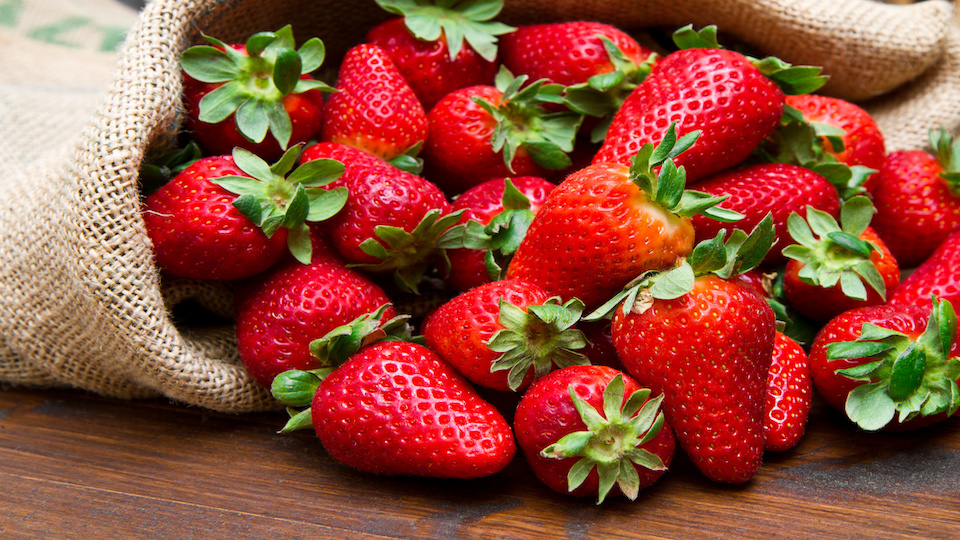There’s just something so delicious about fresh, summer strawberries. They taste so much better than the strawberries you find in the grocery store, and it doesn’t take much effort to grow that juicy goodness. Fortunately, strawberries can be grown in containers on your porch, patio, or front stoop, so you don’t even have to have a garden to enjoy basketfuls of beautiful strawberries this season. Plus, when your plants are right out your back door, you’ll be more likely to catch the fruit at the peak of ripeness and enjoy optimal flavor.
Growing strawberries in containers gives you full control over the soil and allows you to protect your plants from slugs and other ground pests. They also make wonderful decorative plants with their vibrant red fruit, delicate white flowers, and thick foliage. What’s not to love? Here’s everything you need to know about growing strawberries in containers.
Planter
Strawberries will grow just as well in containers as they do in the ground if cared for properly. Your options when selecting the container for your strawberries are extensive. Choose a hanging basket, window planter, wooden crate, old wheelbarrow, coffee jar, or any other type of planter you like. These delicious, hardy plants can be grown in containers as small as 10 inches wide and 8 inches deep, but it is important to keep in mind that the smaller the container, the more often you will have to water and the fewer plants you’ll be able to fit. Make sure that your container has ample drainage holes since strawberries hate to be grown in wet or soggy soil.
Soil
Fill whatever container you select with loose, loamy potting mix. It is vital to choose a soil that will hold water but is also well-draining. Strawberries grow best in soil that is slightly acidic with a pH between 5.5 and 6.8, so it is also a good idea to amend the soil with nutrient-rich compost before planting.
Selecting plants
Choosing your strawberry variety will usually come down to personal preference. Some varieties such as June-bearers will produce a hearty yield in early summer and then send out runners, which are slender horizontal stems with small plantlets. While others, called ever-bearing or day-neutral strawberries, will give you a steady stream of fruit throughout the first year and won’t send off as many runners, which makes them a better choice for containers. Varieties suitable for containers include ‘Temptation, ‘Seascape,’ and ‘Tristar.’ You could also try growing Alpine strawberries, which are bushier than regular strawberries with smaller fruit and no runners. The berries from these tidy plants are usually incredibly sweet and flavorful.
Planting
Overcrowded strawberries will produce beautiful, lush, green leaves, but the fruit will be small not as prolific. Keep to three strawberry plants per one foot of soil space. Choose a location for your pots that receives at least eight hours of full sun every day.
Make sure just to bury the roots of the plant and not the crown when you are planting your strawberries. Leaves, flowers, and fruit come from the crown and will be stifled if it is covered in soil. Plus, it could cause the plant to rot and die from excess moisture.
Protection
Just because you have your strawberries in containers, doesn’t mean they are invulnerable to pests and diseases. Birds are particularly detrimental to your strawberries, whisking away the ripe fruit before you have a chance to harvest. Place netting or fencing over your pots to keep these and other hungry garden critters away from your ruby-red jewels.
Water requirements
Balancing water requirements is one of the most tricky aspects of container gardening. Too much water and your plants will begin to rot and droop, too little and they will wilt and dry up. A good rule of thumb is to water your strawberry containers at the base of the plant whenever the soil feels dry about 1 inch below the surface. The soil in containers dries out quicker than typical garden beds, so it is crucial to keep an eye on the moisture levels. In the middle of summer or during long, dry periods, water container strawberries every day.
Feeding
Fertilizer is important when you are growing strawberries in pots to help provide adequate nutrients and minerals. Give your strawberry plants a dose of liquid fertilizer that is high in phosphorous every few weeks throughout spring and summer to increase yield and encourage growth.
Winter care
Strawberries will usually keep producing for three seasons as long as they are left to go dormant in the winter. Water occasionally during this time to prevent the soil from drying out completely. If you have frigid winters, move them into an unheated garage or wrap the pots in an insulating material.
-Taylor Ramsey




